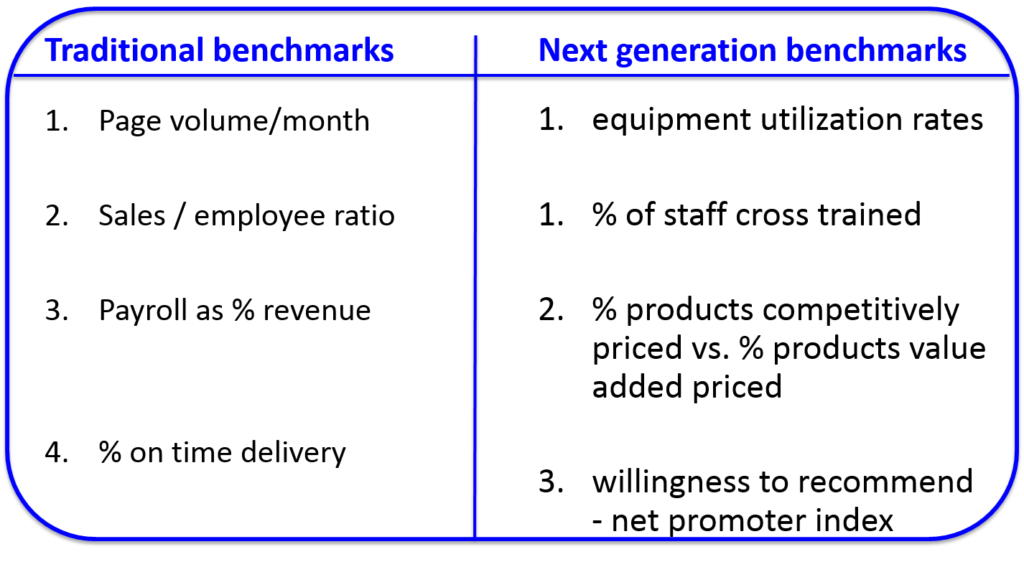During my tenure with NAPL (now EpiComm), I worked closely with Andy Paparazzi, VP and Chief Economist, to better understand differences between profit leading companies and the rest. Every year we learned more, but just a few common denominators of leaders include:
- Creating more value added products,
- Meeting more frequently with their customers,
- Listening to the voice of their customers and understanding their changing needs,
- Using social media more effectively as a marketing tool, and
- Providing ongoing sales training and building an infrastructure to nurture and close deals.
Contrary to public belief, leaders are not better but are often more likely to recognize and deal with their problems. Leaders are not afraid to admit that they have problems with follow-through, missing staff skills, measuring performance, overcoming resistance to change, and procrastination.
Ironically, while everyone thinks they are a leader, less than 10% of the industry are actually leaders. The only way to know if you’re a leader is to measure and benchmark your performance against other companies.
The problem, however, is that few people, if anybody, know what to measure, how to measure and have no benchmarks. In addition, measurements and benchmarks are shifting from those used 30 years ago to those more relevant to today’s business. Here are some traditional and next generation benchmarks we are testing when we evaluate companies.

—
Howie Fenton is the Vice President of Consulting Services for IMG. For 25 years, he has focused on benchmarking operational and financial performance for enterprise and commercial printers. For more info, e-mail hfenton@imgresults.com.



